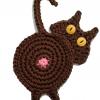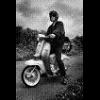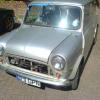Want to sort this out before it becomes more than surface and starts rotting back.
Sorry to say Paul but you won't stop it rotting back as they rot forwards.
What you see as bubbling on the surface is the rust breaking out from behind so it is in fact the last stages of the seam rotting.
If it is minor, then the best (and only really) way of rectifying it is to split the seams and clean all of the rust out of the seams before re sealing it and painting it. It is fairly tricky to do however as the seams are not easy to split without damaging the panels.
You could clean back all visable rust from the join without splitting it but you would have to clean back the flanges on the back of the seam from inside the wheel arch and re-seal as required but this will not last in the long term as the rust will still be hidden in the seam.
Now for the paint,
Bare metal should only need a primer. Filler is not necessary unless you are filling a dent etc. What you will need to do is feather the edges of the paint into the bare metal areas first which can be done with a 320-400 grit sand paper.
if the car is painted with base and clear and you are only disturbing small areas of the colour with repairs, then the idea is to flat down the entire panel with a 1500 grit wet/dry paper or scotchbrites enough to take the shine away and leave you with flat looking paint.
Once you have masked off the entire panel then it's just a case or applying the base coat to the repaired areas blending the colour out into the panel but not colouring the whole thing. Then once the base has flashed off, you can the lacquer the entire panel.
Fading lacquer within a panel is not worth doing unless it's a particularly large panel and the rest is completely sound.
This is just a very basic guide to give you an idea. Hopefully it does.
Cheers
Ben
















